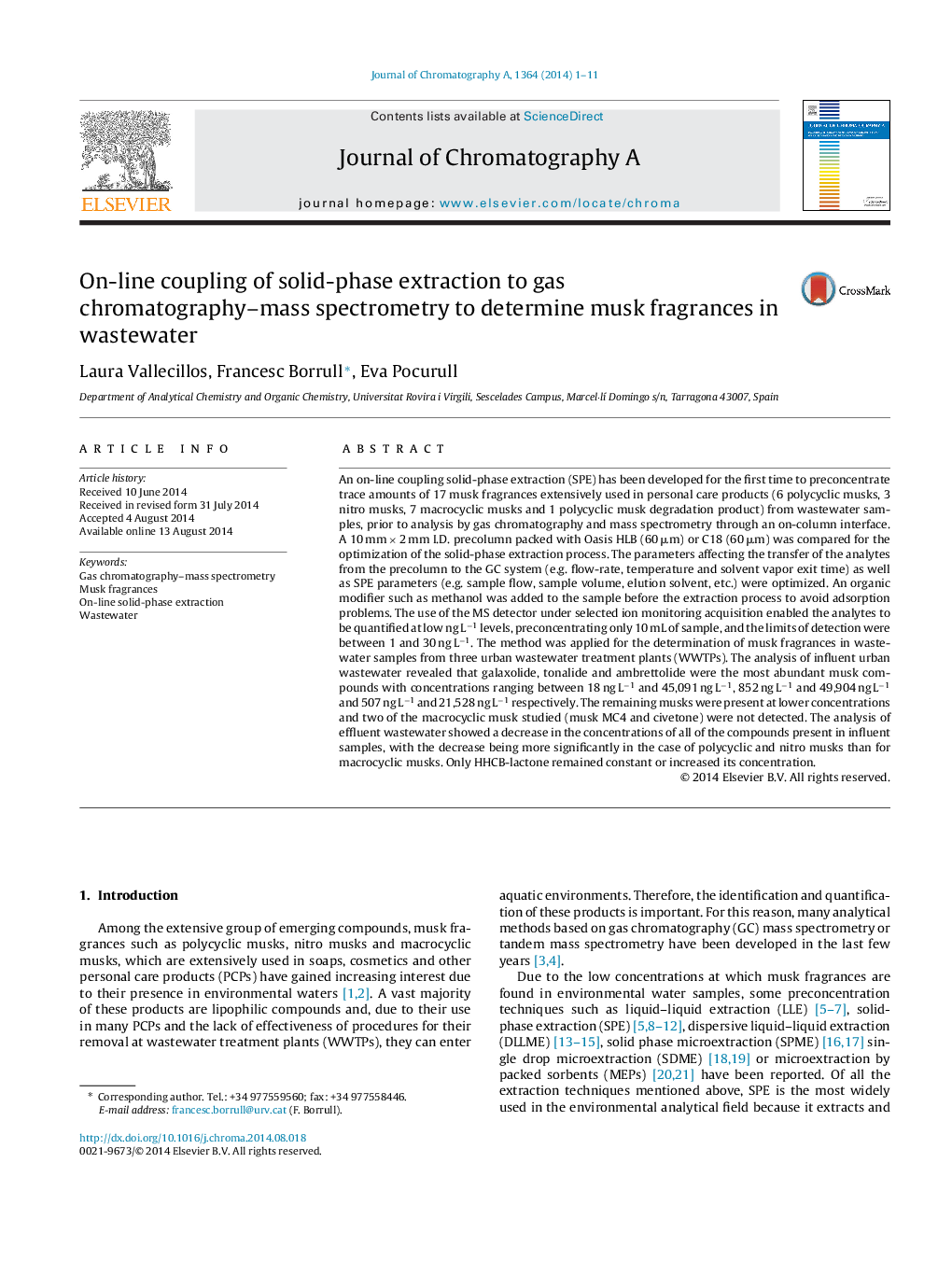| Article ID | Journal | Published Year | Pages | File Type |
|---|---|---|---|---|
| 1202871 | Journal of Chromatography A | 2014 | 11 Pages |
•On-line SPE followed by GC–MS was successfully applied to determine musk fragrances in wastewater samples.•An on-column interface permitted the injection of large volumes directly to the GC–MS system.•Method provides limits of detection and quantification at low ng L−1.•Good values of intra-day and inter-day repeatabilities have been obtained.•All the target musks fragrances, except musk MC4 and civetone, were detected in influent samples.
An on-line coupling solid-phase extraction (SPE) has been developed for the first time to preconcentrate trace amounts of 17 musk fragrances extensively used in personal care products (6 polycyclic musks, 3 nitro musks, 7 macrocyclic musks and 1 polycyclic musk degradation product) from wastewater samples, prior to analysis by gas chromatography and mass spectrometry through an on-column interface. A 10 mm × 2 mm I.D. precolumn packed with Oasis HLB (60 μm) or C18 (60 μm) was compared for the optimization of the solid-phase extraction process. The parameters affecting the transfer of the analytes from the precolumn to the GC system (e.g. flow-rate, temperature and solvent vapor exit time) as well as SPE parameters (e.g. sample flow, sample volume, elution solvent, etc.) were optimized. An organic modifier such as methanol was added to the sample before the extraction process to avoid adsorption problems. The use of the MS detector under selected ion monitoring acquisition enabled the analytes to be quantified at low ng L−1 levels, preconcentrating only 10 mL of sample, and the limits of detection were between 1 and 30 ng L−1. The method was applied for the determination of musk fragrances in wastewater samples from three urban wastewater treatment plants (WWTPs). The analysis of influent urban wastewater revealed that galaxolide, tonalide and ambrettolide were the most abundant musk compounds with concentrations ranging between 18 ng L−1 and 45,091 ng L−1, 852 ng L−1 and 49,904 ng L−1 and 507 ng L−1 and 21,528 ng L−1 respectively. The remaining musks were present at lower concentrations and two of the macrocyclic musk studied (musk MC4 and civetone) were not detected. The analysis of effluent wastewater showed a decrease in the concentrations of all of the compounds present in influent samples, with the decrease being more significantly in the case of polycyclic and nitro musks than for macrocyclic musks. Only HHCB-lactone remained constant or increased its concentration.
